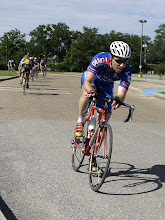The path to custom
At present, Gulf Coast Cycle Fit operates in a post purchase model. Customers come to me with bikes that have been purchased from bike shops, friends or on eBay. Anything is possible. 99.9% of the time the bike shop route is the best. Our local bike shop owners/staff do a good job of putting clients on the right size frame. Conversely, if a bike is purchased from a friend or off the internet, the chances of having the right frame size is a much more difficult proposition.
It's my job to position the client in the most effective position so that they have the potential to deliver effective power. If the frame is the wrong size, it's my job to share the reality with the client in an honest and forthright manner. I've always said, "Whatever is not wonderful and lovely should be considered a learning experience". Purchasing another new frame would fall in that category.
If I were going to plan a custom bike experience from the beginning, this would be my plan.
First, all points of contact on the bike have to be considered. I would start with the saddle followed by handlebars and shifter selection(groupo)
Saddle: of all the issues that impact a cyclist, saddle discomfort has to be the worst. In a lab setting, I would go through the process of trying multiple saddle shapes. The client would choose the saddle provided the greatest comfort regardless of weight. Comfort, comfort, comfort rules.
Handlebar width/ Shifter shape: The client would have the opportunity to sit on a mock up bike with the chosen saddle. Handlebars will be swapped out so that they can get a feel for Campy vs. Shimano vs. SRAM. Each of the brands works well and each has strengths and weaknesses. Everything should be weighed out.
Shoe/pedal: This has less of an impact on comfort however, going through the process of selecting a quality shoe is critical. Foot numbness/hot spots are a common complaint, however it's more result of technique than fit. Pedals have to be selected based on objective information. Time/Look/Shimano/Speedplay. There are pros and cons for each. I have my preference but each should be considered for their relative strengths.
Once these item are selected, the full compliment is applied to the fit cycle(saddle, handlebar/shifters, pedals). Now the bike fit can begin based on limb lengths, relative flexibilities and overall morphology. The actual geometry can be determined at this point so that the frame meets the performance characteristics of the client.
Once the frame is built-up, all the components are installed. The bike is ready for client training.
Here's where the next phase begins. A custom bike should be a "custom riding experience". It would be the equivalent of going to driving school if you purchased a new Porsche. It's time for training. Now that the client has personally selected componentry installed on a custom designed frame, the client needs to learn how to get the most from the purchase.
Regular client training sessions should occur over a 4-6week period so that the customer can be trained to pedal the bike correctly based on benchmark data. This has nothing to do with fitness, it's all about technique.
In the end, the client has been transformed into a completely different rider. All processes have been focused on the ultimate goal of meeting the customers expectations of exceptional performance.


0 Comments:
Post a Comment
<< Home